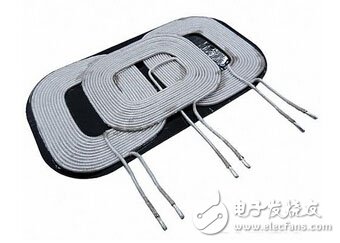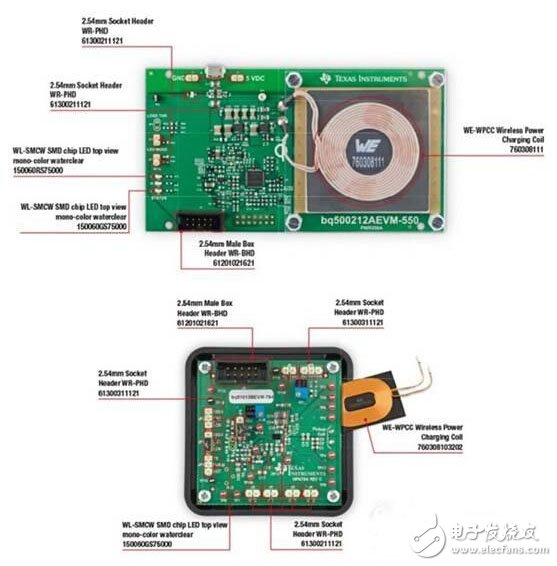How many mobile phones, music players and other portable devices have been thrown by us because the chip power connector is thrown into the trash can? It seems that there is a need to charge our equipment so that it will make the final power connector to be intermittently connected or open. Consider the cost of repairs, but don't pay to fix it (and good luck to find someone willing to deal with the fix). One of the answers is to completely avoid the connector to support wireless charging.
While novelty first, wireless charging has evolved to the point where well-known vendors roll out pieces and/or can easily integrate the entire solution into your design. It is no longer necessary to customize the coil pad or to limit the task by numerous hand-made tasks.
This article will explore the state of providing off-the-shelf wireless charging technology as well as components and solutions. These resources make it faster and easier to add wireless charging to your design without the need for expensive repetitive and manual steps.
This is a transformer
Basically, the wireless power transmission is next to a coil, or in other words, the coil of the transformer. In this case, the transformer is air coupled rather than wound around a common ferrite core. In all cases, for one side to oscillate, its field radiates outward until it slices through another coil to restore power in an alternating form.
PCB traces can be used as coils in some cases. With transformers, the voltage and current ratios are on the PCB traces by rotating the number of primary and secondary coils. As a result, the size and trace density may limit to become possible on the PCB and electricity? ? The maximum number of streams that can be carried can be tracked. This makes true coil windings more desirable and efficient.
As inductors, these transformer coils will exhibit a resonant frequency, and it is desirable to be able to select and fine tune the frequency to be used for charging. Each main frequency produces harmonics that can potentially interfere with other RF links. According to your design? ? The ability to select harmonic frequencies may help improve the quality of the signal received in other bands. In some cases, the sweep frequency is used to distribute any noise or interfere with the surrounding band. In addition, the receiver portion is typically tuned to the same frequency for maximum power transfer.
Although we are free to basically design our own simple inductive coupling (or electromagnetic coupling) charging link, several competing quasi-standards have emerged address design issues and attempt to draw the attention of others. The Power Supply Alliance (PMA) provides a standard that is accepted by some manufacturers and retailers. Starbucks, for example, announced that it will place a PMA charger in its 8000 store and is already supported by Android phone maker Kyocera. PMA is a function of absorbing A4WP, and its Rezence is a wireless power transfer technology and specification based on the principle of magnetic resonance. However, the most widely accepted wireless charging technology to date has been derived from the Wireless Charging Alliance and its Qi standard.
Multiple choice coils and chips
Regardless of the underlying transmit and receive circuits, wireless charging requires coil and component manufacturers such as ABRACON, TDK, Vishay Dell and Wurth, which offer a wide selection of wireless charging coils (fries) that should do the job. Finding a reliable source of consistent coils is important to support high volume production runs. Single coils, double coils and even two wire windings can be used to transfer considerable current through the air gap.
A single coil can be the most cost-effective solution for a designed charging stand. A part of the ABRACON AWCCA-50N50H40-C02-B is a single layer coil that can be used as both a transmitter and a receiver. The 6.3 micro-hentron inductor is provided with a relatively high Q factor of 72 for a self-resonant frequency of 6.4 MHz. Please note that the resistance is 19 milliohms. The transmitter coil should always use a protection circuit that will attract more than 50 A of 1 V due to short-circuit conditions, in this case, as an example.
The supplier's AWCCA-50N50 series, which includes the AWCCA-50N50H40-C02-B, provides support for various versions of the primary current 11 that can be operated from 5.4 to 2.8 to 6 MHz. The company offers the AWCCA series of wireless charging coils, which are available on the Digi-Key website for product training modules.
When you use the same coil for the symmetry of receiving and transmitting energy is good, you can benefit from the possible higher level of volume pricing, because your number has doubled. However, it may not always be desirable to use the same coil for transmitting and receiving. On the one hand, when you have different coils, you can have a ratio of more than 1:1, which means you will have greater flexibility with the output voltage level.
Many manufacturers produce coils for different transmit and receive powers. Take the TDK WT-505060-10K2-A11-G single-layer energy-emitting coil with a 6.3μH inductor. This part has a resonant Q factor of 70, a DC resistance of 60 milliohms, and is designed to oscillate at 100 kHz.
As part of TDK's wireless charging transmitter coil unit, the company offers a complete assembly stack ready for installation (Figure 1).

Figure 1: The OEM product contains a stack of components ready for direct installation to provide consistent performance and reduce manufacturing steps.
The corresponding receiving coils with the same structure and shape may be members of the TDK WT505090-10K2-A11-G or any of the company's WT series receiving coils.
Multi-unit charging
Areas with larger charges may allow for less precise position, or even multiple small devices for charging when one multi-coil is set for WT-1005660-12K2-A6-G like TDK. This three-coil single-layer assembly has a fairly uniform inductance (12.5, 11.5, and 12.5μH) between the three coils and a frequency range of 100 kHz (Figure 2).

Figure 2: The multi-coil assembly is pre-fabricated for larger area billing, allowing multiple units to simultaneously charge pads.
TDK's ultra-thin receiving coil unit for wireless power transfer like its WRM483245-15F5-5V-G or similar thin low profile planar coil can be more easily installed in the rear housing of a handheld device as long as it is unshielded.
Send and receive chip
Related ICs can be used as simple oscillator controllers, or they can be more advanced. As more and more attention is being paid to the interface standard from the Wireless Charging Alliance (WPC), more chip manufacturers offer integrated, peripheral chips that take over all of the transceiver functions.
Yes, send and receive. With a benefit, the two-way communication link is formed using load modulation techniques. This is very attractive because the battery pack can now report to the charger for faster, more reliable charging.
With more than 200 members, the Hyundai Qi standard allows resonance charging to leave the base plate at distances up to 35 mm. Our goal is to develop standards to allow for large equipment and appliances up to 2000 watts.
Some chip makers are flooding into games, sending and receiving chips, reference designs and development kits. For example, the Toshiba TB6860WBG, EL wireless power receiver chip provides 60 mA, 3.3 V regulated output for local circuits in feed mode. It can also operate in a charging mode where bidirectional communication can occur with the remote transmitter through the load modulation techniques previously discussed. The built-in I2C communication port allows for local micro-reading of battery status and helps with power management by turning off the transmitter when it is not necessary.
Even encryption can run safely. This can be used for tethering devices so that overwhelming is not accidentally transmitted to a different receiver. The switching frequency can vary from 110 to 205 kHz, helping to find the best point resonance for high efficiency.
Freescale is serious about wireless power as well as its automotive grade single and multi-coil 5 V controller chips, such as the MWCT1000CFM wireless power transfer, which is also compatible. Like the rest, protection is built-in overcurrent and overvoltage as well as thermal shutdown. The number of external components and handling anomalies are reduced within the digital demodulator.
Freescale also offers a low-cost wireless charging demonstration and development kit. The WCT-5W1COILTX helps ease the designer's access to this technology, including international power adapters and support. It is a complete system solution that includes all the necessary hardware and software components to quickly implement a single coil charger solution.
Texas Instruments is also very active in power management, and it is no exception. By separating the energy emitters from the receiver, the device can be optimized for each side of the function. Parts like the BQ500210RGZT transmitter and receiver, such as the BQ51013ARHLR range from 20μA to 2.5 transmission.
In addition, TI has not been able to test and evaluate technology more easily due to a couple of reference designs (TI BQ500210EVM-689 and TI BQ500210EVM-689) and development kits. The reference design is semi-WPC certified from AcTIve like the EP5220HPA11-1, TI and a third-party development kit, also certified for the Würth Wireless Plug and Play Power Transfer Kit with TI components (Figures 3A and 3B) .

Figure 3: Reference Design and Test/Development Provides quick and easy access to the Transmitter (A) and Receiver (B) from TI and third-party developer kits, which are already compatible and certified.
Computer Cable include Computer Power Cord, hdmi Cable, hdmi to hdmi cable,vga cable, digital coaxial cable , usb printer cable, mini hdmi cable, local communication cable, LAN cable, long distance symmetric cable and submarine cable etc.
Yidashun produces hdmi cable, VGA cable and printer cable mainly, the length is 1.5m, 3m, 5m, 10m, 15m, 20m, 25m, 30m, 40m, 50m for choose. Yidashun has 1080P and 4K both.
Computer Cable
Computer Cable,Computer Power Cord,Mini Computer Cable,USB Computer Cable
Shenzhen Yidashun Technology Co., Ltd. , https://www.ydsadapter.com